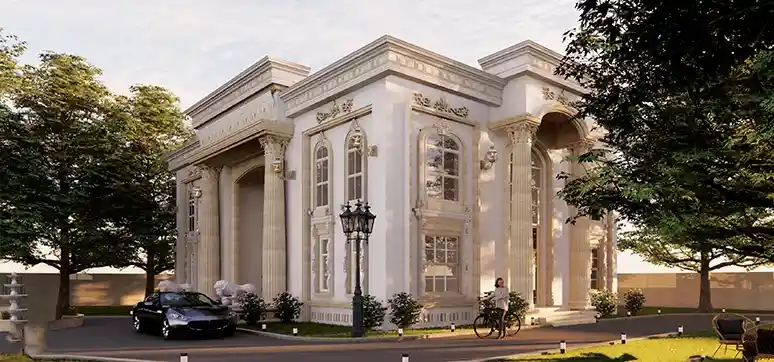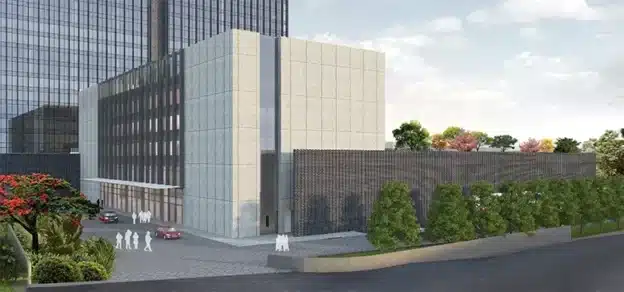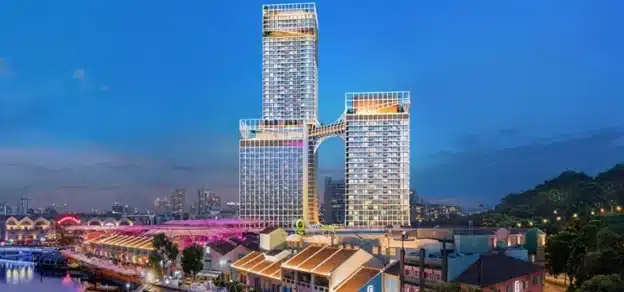Exterior wall cladding is a crucial aspect of building design that offers both practical benefits and aesthetic value. It enhances a building’s appearance, protects it from the weather elements, and contributes to its overall performance and longevity. The choice of cladding material should be made based on factors such as climate, architectural style, maintenance considerations, and environmental impact. The right cladding helps to maintain the buildings weather-tight and cost-effective. It provides thermal insulation and helps in reducing the temperature variation inside the building. It also helps to improve interior acoustics and daylighting. The cladding can influence the value, saleability and safety of the building. So cladding your property effectively is a wise investment that pays both short and longer-term dividends.
Certainly, investing in new cladding for your property can be a great way to enhance its aesthetic appeal and give it a unique touch. Investing time and thought into selecting the right cladding for your property will ensure that you create a visually appealing and durable exterior that reflects your personal style. Here’s a comprehensive guide to help you get started:
THE PURPOSES OF EXTERIOR WALL CLADDING

Founder, Knowledge Squirrel Co-Founder, Studio Masons.
External Cladding has quite a diversified usage in the building envelope. Its primary purpose is to enclose the envelope, which is weather-tight, acting as a moisture barrier and a thermal Barrier to keep the inside environment safeguarded from the extreme outside weather. From a design point of view, it reflects the design philosophy chosen by an architect, from contemporary design to classical design, the cladding is the conclusion of that, points out Ajay Gupta, Founder of Knowledge Squirrel and Co-founder of Studio Masons.

Partner, Aashray Design Consultants
According to Ar. Amit Murao, Partner, Aashray Design Consultants, exterior wall cladding serves multiple purposes, such as enhancing the building’s aesthetics, providing weather protection, improving energy efficiency, and contributing to the structural integrity of the construction.

Founding Director,
Aakrit Creative Design
Ar. Ankit Garg, Founding Director, Aakrit Creative Design agrees that the main purpose of cladding is to enhance the visual appeal of a building. It comes in various sizes, shapes as well as materials, colours and textures allowing people to achieve different looks and styles to complement the overall design and character. The cladding acts as a protective barrier against the elements, including rain, wind, snow, and UV radiation. It helps to prevent moisture penetration into the building envelope, thus reducing the risk of water damage and the generation of bacterial mould growth.

Founder Partner,
Design21
Ar. Amit Gulati, Founder Partner, Design21: The multifaceted role of exterior wall cladding extends beyond mere protection and aesthetics. It acts as an architectural element, shielding the building from external factors, including harsh weather, UV radiation, and pollutants. Beyond durability, it forges an intimate dialogue with the surroundings, elevating the structure’s visual identity and making a bold statement about its design philosophy. A harmonious blend of function and form, cladding embodies the essence of sustainable design by fortifying the building’s resilience while creating an inviting façade.

Urbanist, Architect and Landscape Designer, Shilpi Architects and Planners
Ar. Paras Netragaonkar, Urbanist, Architect and Landscape Designer, Shilpi Architects and Planners: The choice of exterior wall cladding should strike a balance between functionality, aesthetics, sustainability, and compliance with local regulations. Exterior wall cladding serves a multifunctional role in modern building construction, combining practicality, aesthetics, and protection to enhance the building’s performance and appearance while respecting the broader context of the location and its social impact.
WHY CLADDING?
The main purpose of exterior wall cladding is to give character to the building and protect the exterior skin from weathering action. If exterior wall cladding is installed, the surface will have to be plastered or some kind of paint will have to be applied. The exterior wall of any building is exposed to environmental factors such as heat during summers, monsoons, and bitter cold in the north in addition to pollutants that attack the surface of the building across all seasons. In case we do not install any exterior wall cladding, the painted or plastered surface comes in contact with the pollutants that have the necessary ingredients to deteriorate the thin layer of protection.
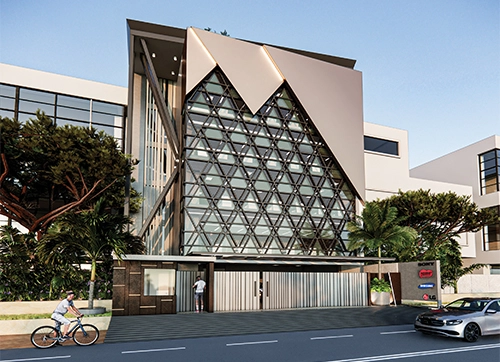
Plaster being cementitious is bound to have surface cracks due to its inherent nature to shrink and weak in withstanding tensile forces. Pollutants enter these cracks and the process of carbonation starts destroying the plaster.
There has been a lot of research and adlibs done to improve the performance of plaster by adding fibers during the manufacturing of the plaster either in the plant or in situ that help prevent cracks. Painting on top of it helps bridge the crack as the paint has some properties of elongation but can bridge beyond a certain crack width and will tear. This situation is similar to an exterior wall having no paint, which was applied considering its ability to withstand pollutants and prevent entry of carbon dioxide (CO2) into the cracks which further reacts to form Carbolic Acid with the moisture or water available and starts the spalling process over a period leading to deboning of the plaster. If this situation is left untreated, major repairs to restore the exterior surface will have to be done. This common sight is seen in the majority of middle-income housing, old industrial structures that had only plastering and cementitious paint to protect them.
Installing exterior wall cladding helps prevent the cracks from appearing as there is some kind of uniform or constant temp that is maintained on the exterior wall surface and even if there is a wide fluctuation, due to the presence of the cladding, the variation does not reach the exterior wall, preventing the cracking and thus the carbonation from occurring.
If a dry cladding system is installed, there is a gap that is created by virtue of the system that allows air to circulate between the cladding and the exterior wall preventing wide fluctuations of temp and preventing the cracks from appearing. However, this leads to other problems of moisture getting absorbed by the exterior wall – either a brick wall or in concrete. If due to bad workmanship, there are hollow pockets in the concrete or the brick, block joints are not densely packed with mortar, water or moisture can enter these defective areas and start damaging the interior spaces.

Real Estate Project Management
Consultant
Whenever a dry type of cladding is installed, a good variety of moisture barriers is applied on the concrete or block-plastered surface. In some rich nations that can afford it, cladding is mandatory due to climatic and codal requirements. Cladding is installing an insulation sheet on the exterior wall to prevent heat gain, impacting and increasing the heating or cooling demand, as the case may be.
(G.S. Balaji, Real Estate Project Management Consultant)
BEST CLADDING SYSTEMS
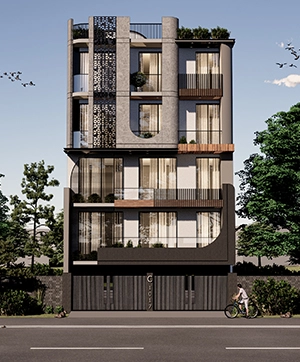
The best or worst cladding systems can’t be defined easily, says Gupta. It all depends on multiple parameters. The design philosophy defines the best material. Other factors like the climatology of the region where the project is conceived, the budget and the timeline for completion, etc., will play a role in defining the right cladding. Manufactured products, such as composite panels, metal cladding, etc., do help in controlling the quality of the cladding as they come in pre-manufactured unit sizes with engineered connections & are much more forgiving in any errors that may have occurred in the base structure of the building, adds Gupta.
According to Ar. Murao, the best building cladding systems vary depending on the project’s requirements and budget. Some popular options include aluminium composite panels, fiber cement, natural stone siding, and high-quality wood laminates.
CLADDING SYSTEMS
a. Aluminium Composite Panels (ACP):
ACP consists of two thin aluminum sheets bonded to a core material, typically made of polyethylene. ACPs offer lightweight, weather resistance, and versatility in design. They are widely used in modern architecture due to their ease of installation and a broad spectrum of color and finish options.
b. Fibre Cement: Fibre cement cladding comprises a mix of cement, cellulose fibers, and other additives. It is durable, non-combustible, and resistant to rot and pests. Fibre cement is commonly employed for both exterior and interior cladding, providing a natural and textured look to buildings.
c. Natural Stone Siding: Natural stone siding utilizes various types of stone, such as granite, limestone, slate, or sandstone, to create visually appealing and durable façades. It offers a timeless, elegant appearance and can withstand different climates, making it suitable for a wide range of projects.
d. High-Quality Wood Laminates: High-quality wood laminates are engineered wood products that replicate the look of natural wood. They are used as cladding to provide warmth and a contemporary touch to buildings.
(Ar. Amit Murao, Partner, Aashray Design Consultants)
APPLICATIONS & BEST PRACTICES
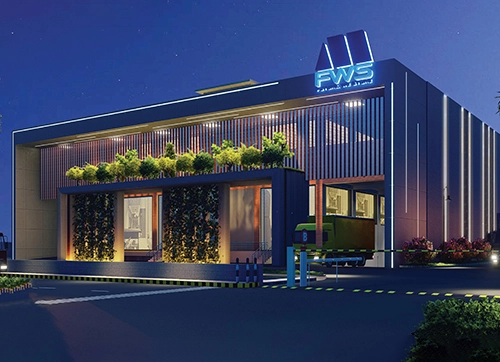
The choice of cladding materials is influenced by factors such as climate, geographical conditions, building type, and architectural design. Here are some recommendations:
– ACP is commonly used in commercial buildings, high-rises, and modern architectural designs due to its lightweight & versatility. However, it should be installed carefully to prevent water infiltration and ensure proper ventilation to avoid potential issues.
– Fibre cement is suitable for a wide range of buildings, including residential, commercial, and industrial structures. It performs well in varying climates and can withstand moisture and extreme temperatures. Proper installation, including proper joint sealing, is crucial for its longevity.
– Natural stone siding is a popular choice for high-end residential projects, cultural buildings, and structures seeking a natural and timeless appearance. It is ideal for regions with harsh weather conditions and provides excellent durability when installed correctly by experienced professionals.
– High-quality wood laminates are often used in residential and hospitality projects, adding a touch of elegance and warmth.
(Ar. Amit Murao, Partner, Aashray Design Consultants)
The ‘best’ building cladding system can vary depending on various factors, including the specific needs of the building, desired aesthetics, budget, location, climate, maintenance considerations, and design preferences, says Ar. Garg. It is essential to adhere to local building codes and regulations when selecting a cladding system.
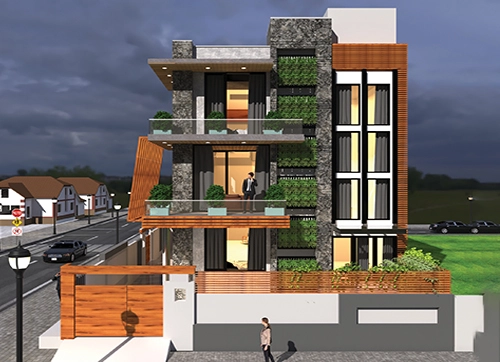
According to Ar. Gulati, Aluminium composite panels gracefully blend practicality with a modern touch, while wood siding exudes an organic charm that stands the test of time. For those seeking a seamless blend of sturdiness and versatility, fibre cement emerges as a distinguished contender. Stone siding provides an elegant and timeless appeal, suitable for both traditional and modern designs. Metals like zinc and copper lend a unique appeal that evolves over time.
From a durability point of view or ascetic point of view, Granite exterior wall cladding is considered the best material, points out Balaji. The cost of such cladding is high, considering the dimensional stability requirement as per the code provision. “Normally architects and designers use Granite only to accentuate or cover up the dead walls. The majority of the walls have openings that are required to bring natural light into the building to meet certain natural light criteria and reduce artificial light. If the orientation of the building is such that the widows or openings face East and west, heat gain through the glass will be high, increasing the cooling demand in hot climates and heating loads in cold climates. thought Low E, high-performance glasses are used to control Solar gain and transmissibility, Double glazed units are commonly used to help improve the energy demands of the building”, adds Balaji.
Many other cladding systems like using High-Pressure Laminates (HPL), terracotta tiles, cementitious boards suitable for external application, and ceramic tiles stuck with adhesives are available and used. With the major fire accidents that have happened in the recent past, ACP which was seen as a cheap option to granite or other types of exterior finishes is not in vogue. Many prominent developers in India have stopped using ACP in their projects or replacing them with pure coloured Galvanised Aluminium sheets.
Pure copper sheets are not recommended as they are extremely expensive & difficult to protect from copper sulphide formation due to Ionic bond reactions.
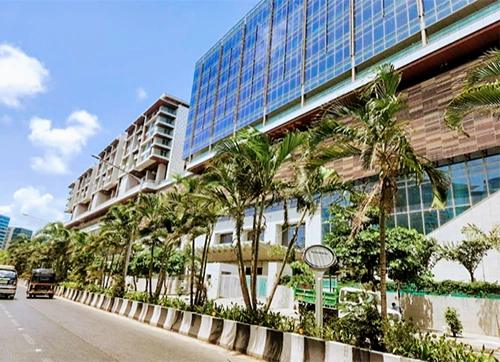
There was a time when very good external paints with improved acrylic and silica fines were popular known as textured paints, but with the advent of glass façades, and curtain walls, even these thick exterior paints with good crack bridging properties are used only in high-end high-rise residential projects and not so much in commercial projects.
Modern materials like GRC (glass-reinforced concrete), GRG (glass reinforced Gypsum), and UHPC (Ultra High-performance Concrete) which are fire resistant are becoming popular because of their versatility to take desired shapes & colours.
Fire-reinforced boards are becoming popular due to their fire-resistance property. The fibre used is Polymelamine fibres, which are non-combustible and when used with concrete become safe for use as an exterior cladding material. Materials like GRP (Glass Reinforced Plastic) must be avoided as the plastic may aid fire to propagate.
TRENDY EXTERIOR CLADDING MATERIALS AVAILABLE IN THE MARKET
Trending cladding materials include all kinds of metal and composite panels as they are a true reflection of contemporary architecture, which many architects focus on, observes Gupta. Large-scale projects also demand fully manufactured external cladding as it helps in managing and controlling the quality of the entire project.
According to Ar. Murao, innovative materials like corten steel, engineered wood, high-pressure laminates and advanced metal composites are the trendiest cladding materials for various types of projects, adding versatility and distinctiveness.
Ar. Garg highly recommends modified wood products as the trendiest exterior material that is gaining popularity in the market due to their innovative designs, sustainability features and unique aesthetics, because they are thermally treated or acetylated wood, offering enhanced durability, improved resistance to decay and insects, and reduced maintenance requirement. With these properties, they retain the natural beauty of wood.
Ar. Gulati, too agrees that the popularity of engineered wood products is on the rise, owing to their sustainability and aesthetic appeal, emulating natural wood. Façades adorned with porcelain panels, featuring vibrant designs and colours, infuse a modern and artistic essence. Translucent panels that allow natural light to filter through create unique & visually striking exteriors. These trendy materials cater to modern construction trends, offering a combination of aesthetics, functionality, and sustainability.
Ar. Netragaonkar gives a list of trendy exterior cladding materials: metal cladding, wood cladding, composite cladding, stone cladding, brick cladding, nature cladding, curtain wall, etc. These materials cater to different project requirements, budgets, and design preferences.
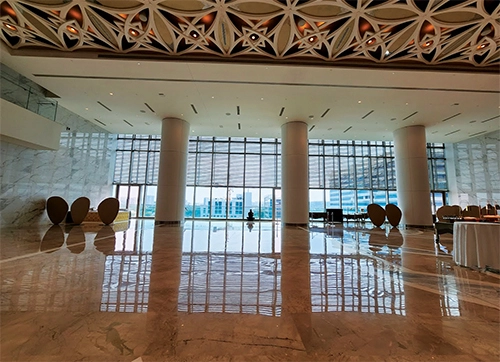
The trendy exterior cladding material today is Granite, fixed using a dry cladding system, says GS Balaji. The dead walls having the fire escape staircases are usually cladded with curtain walls as they would like the well-lit interior to be visible. Normally combination of many materials is used to make the building look beautiful. Balaji adds that, of late, terracotta tiles in small quantities and high-pressure Laminates that look like wood but are suitable for exterior use are being preferred.
In the high-rise residential segment, with massive use of engineered formwork and seismic design requirements to fulfill coal requirements, a considerable amount of shear walls are incorporated in the design. These walls today can be built to very good dimensional tolerances requiring no plastering to cover workmanship defects.
If the client has a good budget, dynamic façade or cladding or popularly responsive façade can be used as exterior wall cladding. Some of the popular features in a dynamic is the use of sensors and motors that operate to cut off heat, and glare and provide shading working as an external skin responding to the demands of making the building energy-efficient.
KEY FACTORS TO CONSIDER WHILE RECOMMENDING EXTERIOR WALL CLADDING MATERIALS
Recommending exterior wall cladding can be classified into a few critical factors, points out Gupta. Design philosophy, the type of project, especially the scale of the project, the geographic location of a project, and crucial factors like time and budget influence the same. Ar. Murao adds that factors such as climatic conditions, sustainability, durability, maintenance, and compliance with local building codes play a crucial role in choosing the wall cladding.
Ar. Gulati recommends climate suitability as the crucial factor while selecting cladding material as it should withstand the specific weather conditions of the region. Maintenance requirements play a significant role in the long-term durability and cost-effectiveness of the cladding system. The environmental impact of the cladding materials is also essential in the context of sustainable and eco-friendly construction. Finally, the architectural style of the building should be considered to ensure the cladding complements the overall design vision.
According to Balaji, in addition to the above-mentioned points, the cladding materials should be chosen considering:
- Aesthetic look and feel, which gives a character to the building or what the client and architect say, defines the building.
- Prevent ingress of any external elements like rain, wind, extreme heat, become a house for pests, not consumed by termites, etc.
- Durability and maintenance cost, what we call life cycle cost.
- Ease of installation and replacement
- Resistance to environmental harsh forces such as rains, pollutants, ageing, losing the structural strength capability due to fatigue, and ability to resist and not fail under cyclonic conditions.
Key factors to ensure the chosen cladding materials align with the specific requirements & goals of the project:
- Climate and weather conditions: The local climate plays a significant role in determining the durability and performance of the cladding material.
- Maintenance requirements: Different cladding materials have varying maintenance needs.
- Durability, weather resistance and longevity: Choose materials with proven durability and a long lifespan.Factors such as resistance to moisture, UV radiation, pests, and physical wear and tear are essential considerations.
- Aesthetics and architectural design: The visual appearance of the cladding material should align with the architectural style and design goals of the building.
- Insulation and energy efficiency: Some cladding materials offer better thermal insulation properties than others.
- Fire resistance
- Environmental impact and sustainability
- Cost and Budget
- Thermal and noise insulation and energy efficiency
- Weight and structural considerations.
(Ar. Ankit Garg, Founding Director, Aakrit Creative Design & Ar. Paras Netragaonkar, Urbanist, Architect and landscape Designer, Shilpi Architects and Planners)
TRENDS IN DESIGNING EXTERIOR CLADDING CONSIDERING HIGH-RISES AND LOW-RISES
High-rise and low-rise can have very different parameters to consider for the external wall cladding. In the current scenario, says Gupta. High-rises need to have factory-manufactured external cladding, which is maintainable by a Building Maintenance System installed at the rooftop for cleaning and replacing any damaged panels. On the other hand, low-rise Buildings can have a mix of all types of claddings. For example, earthy vernacular design ideas. It could be just plastered and painted or clad in wood or wood-like manufactured products. In low rise, the choices are endless.
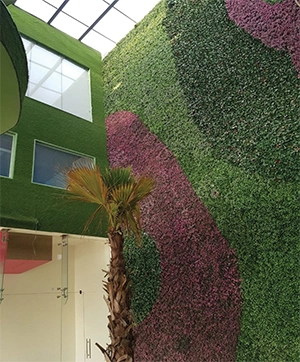
For high-rises, curtain wall systems with energy-efficient glazing and unitized panels are gaining popularity, notes Ar. Murao. As observed by Gupta, Murao too opines that low-rises are witnessing a resurgence in natural and traditional materials such as timber cladding and stone veneers, emphasising a connection with nature and the surroundings. “In one of my recent projects, I utilised engineered wood panels to achieve a contemporary, sustainable façade design for a residential project.
The engineered wood provided a warm and inviting atmosphere while ensuring long-term durability”, says Ar. Murao. The success of any cladding project relies on careful material selection, thorough installation practices, and adherence to industry standards. It’s essential to engage experienced architects, engineers, and contractors to execute these cladding solutions effectively.
Ar. Gulati, recommends cladding designs with unique textures, patterns, and bold colours to create visually striking façades. High-rises often prioritise lightweight materials that can be efficiently installed, while low-rises may incorporate traditional materials like brick and stone, blending classic charm with contemporary elements. Thermal Breaks, Insulated façade details and dry construction techniques are making their way into the mainstream, adds Ar. Gulati.
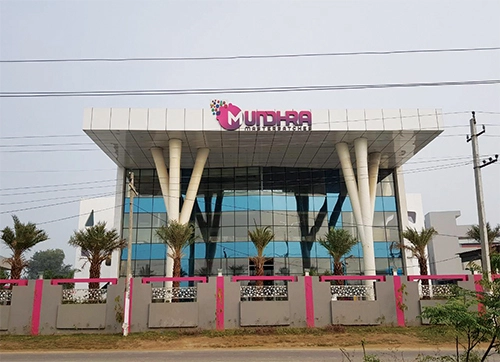
The perpetuation of smart cladding technologies not only checks the structure’s energy consumption but also helps improve safety, comfort & security for the residents. In façades & building envelopes for high-rise and low-rise construction, aluminium is indisputably the best material to use, associated with other materials such as glass, composite panels, glass-reinforced concrete, etc., notes Ar. Netragaonkar
Incorporating Nature into Cladding Design
Nature lovers who love doing landscape projects can go with Exterior Cladding incorporating greenery – i.e., Biophilic Design and Sustainable and Eco-friendly Materials.
- Biophilic Design: Incorporating elements of nature into the cladding design, such as green walls/moss walls or façades with patterns inspired by natural elements, fosters a sense of connection to the outdoors and promotes well-being.
- Sustainable and Eco-friendly Materials: There is a growing emphasis on using sustainable and eco-friendly cladding materials, such as recycled content, reclaimed wood, bio-based composites, and green façades with living plants. These materials contribute to reduced environmental impact and improved energy efficiency.
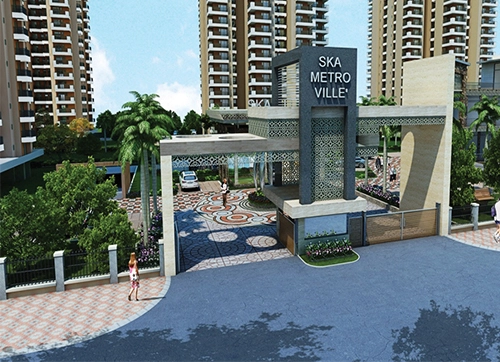
These trends reflect a shift toward smore sustainable, innovative, and aesthetically appealing exterior cladding designs for both high-rise and low-rise buildings. Incorporating Nature into Cladding Design
(Ar. Ankit Garg, Founding Director, Aakrit Creative Design)
FIRE-SAFE CLADDING MATERIALS: TESTING & CERTIFICATION
Fire safety is of paramount importance in cladding design. Using materials with fire-resistant properties and adhering to fire safety regulations during installation is critical. Materials should comply with relevant fire safety standards. Ensuring that cladding materials and installation methods are fire-safe is of utmost importance for the safety of occupants and the overall integrity of the building.
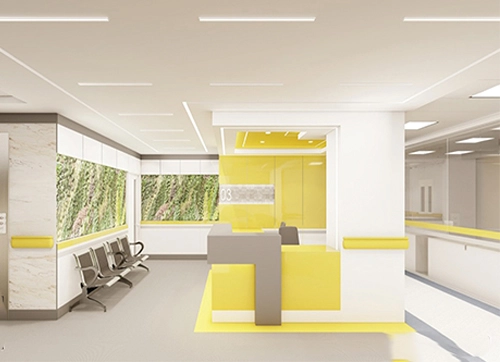
Fire-safe clad is usually meant for any building above 15 meters high and that’s why manufactured metal or composite materials are the right choice today as they all follow strict standards of ASTM for fire safety that are followed globally, and hence give us some comfort having a fully enclosed fire safe building
Architects can ensure fire safety in cladding materials and installation by taking specific measures. First, the structural members have to be fire safe ensuring the façade installations don’t compromise on that in any way, says Ar. Gulati. Further, each floor is treated as a different compartment from a fire perspective, The cladding details should help in the compartmentalisation by restricting smoke & also fire from reaching the other floors through the façade.
Architects should choose cladding materials with the correct Hour rating; Adhering to local building codes and regulations related to fire safety is essential. Architects must recommend proper installation methods to minimise the risk of fire propagation and ensure the safety of the building’s occupants and minimise the impact on the building itself. Regular inspections and maintenance of the cladding system are also crucial to identify and address any potential fire hazards promptly.
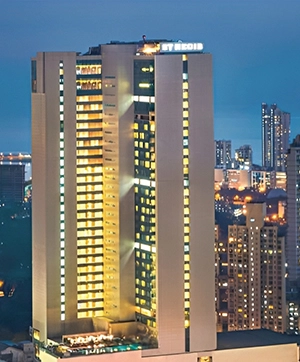
Netragaonkar concludes that fire-resistant materials, such as concrete and steel, should be used in the construction. The building should be designed with fire safety in mind, including the placement of fire exits. Fire detection and suppression systems, such as smoke detectors and sprinklers, should be installed. To achieve this, several testing and certification methods can be employed to assure fire resistance. various fire testing methods are used, ranging from small-scale tests to intermediate-scale tests that evaluate the fire reaction and fire propagation.
- Testing of Cladding Systems: In addition to testing individual materials, consider fire testing of the entire cladding system, including the assembly and installation methods.
- Fire Safety Plan: Develop a comprehensive fire safety plan for the building, including evacuation procedures, fire suppression systems, and fire drills.
Several testing and certification processes can assure the fire performance of cladding systems, points out Ar. Garg. Here’s how to make sure that cladding materials & installation methods are fire-safe:
- Building Codes & Regulations: Start by understanding the local building codes and regulations about fire safety for exterior cladding.
- Fire Classification: Check the fire classification of the cladding material. Some countries have specific fire classification systems that categorise materials based on their fire performance, such as Class A, B, or C. Class A is typically the highest fire resistance rating.
- Fire-Rated Cladding Materials: Consider using fire-rated cladding materials specifically designed to offer better fire resistance.
Always prioritise safety when making decisions about exterior cladding, especially in high-rise buildings where fire safety is critical.
FIRE SAFE FAÇADES
We have to select materials that are either fireproof, fire retardant, or avoid that aid as a catalyst to keep the fire going, releasing toxic fumes such as chlorine, and carbon monoxide which also affect humans and ultimately cause death.
In some fires, it was found that the rubber core in ACP aided the fire in travelling down the cladding when the popular belief or previous observation was fire always travelled up. In such situations, fire from either within the building travels to the exterior surface through the windows. If the cladding is made of combustible material like wood, hydrocarbon that has volatile organic compounds, or catalysts that aid the burning or accelerate the spread of fire such materials need to be avoided, rather than repenting later. There are laboratories and independent bodies such as UL, FM who test if the materials comply with and various codes that mandate a certain level of performance.
Some of the major criteria for the classification of materials for high-rise and low-rise exist in various countries and also in India. Material considered safe for use in high-rise and low-rise are categorised as Class A and Class B materials and goes up to Class F being untested material.
For low-rise buildings, which are those below 11 m in the European Union and in India it is up to 15 m, Class B materials that are fire resistant, retardant and do not contribute as fuel or become a catalyst can be used. For high-rise buildings, only Class A materials, which are not combustible are suitable. These materials must comply with Euro-class specs before they are recommended as cladding material. UPVC and wooden cladding materials must be avoided in cladding unless they are properly treated to be fire retardant and certified by independent laboratories I will add NBC guidelines for exterior wall cladding concerning BIS codes.
Aluminium, steel. stone wool (also known as rock mineral wool) and natural stone are considered to be non-combustible and preferred for cladding and insulation. Developers, consultants and engineers are familiar with the various external cladding systems that are popular in addition to glass curtain walls, glazed unitised and other types of framed panels, Metal Composite Materials (MCM) popularly known as ACP cladding, Exterior Insulation Finish Systems (EIFS). Rain Screen Systems (RCS). The most common external cladding systems used in India are glass curtain walls, Unitised glazing systems, and MCM. EIFS and RCS are not very popular either due to their poor fire resistance property and cost.
In general, all the above systems must have fire resistance as per the local requirements and codes. Materials in general, used in external cladding, need to comply with the requirements specified in
- NFPA 285 – standard fire test method for evaluation of fire propagation characteristics
- ASTM E119 – Standard test Methods for Fire Tests of Building Construction and Materials
- ASTM E 1354 –Standard Test for Heat and Visible Smoke Release for Materials and Products
- ASTM E2307 – Standard Test Method for Determining Fire Resistance of Perimeter Fire Barriers
- BS 8414 – Fire Performance of External Cladding Systems
- BS 476 – Fire Tests on Building Material and Structure
- • NBC 2016 – suggests installing fire sprinklers within 600 mm from the external cladding / Façade assembly in a building fully protected by sprinklers. In a building not protected with sprinklers, materials used must have fire resistance anywhere between 60 – 240 m for various components of the building.
The majority of the material used in external cladding either complies with these codal requirements or is totally inert to fire.
CONCLUSION:
With the concept of low carbon, carbon-neutral buildings being the requirement of the day and India’s commitment to reduce factors that contribute to Global warming, materials that have low embodied energy are preferred. Though India has achieved its renewable energy goals well ahead of 2030, we have a humongous task of achieving Carbon neutrality by 2070. With awareness coming in and newer material manufacturing processes becoming a reality, the entire construction Industry has imbibed the idea and is willing to walk the talk.
